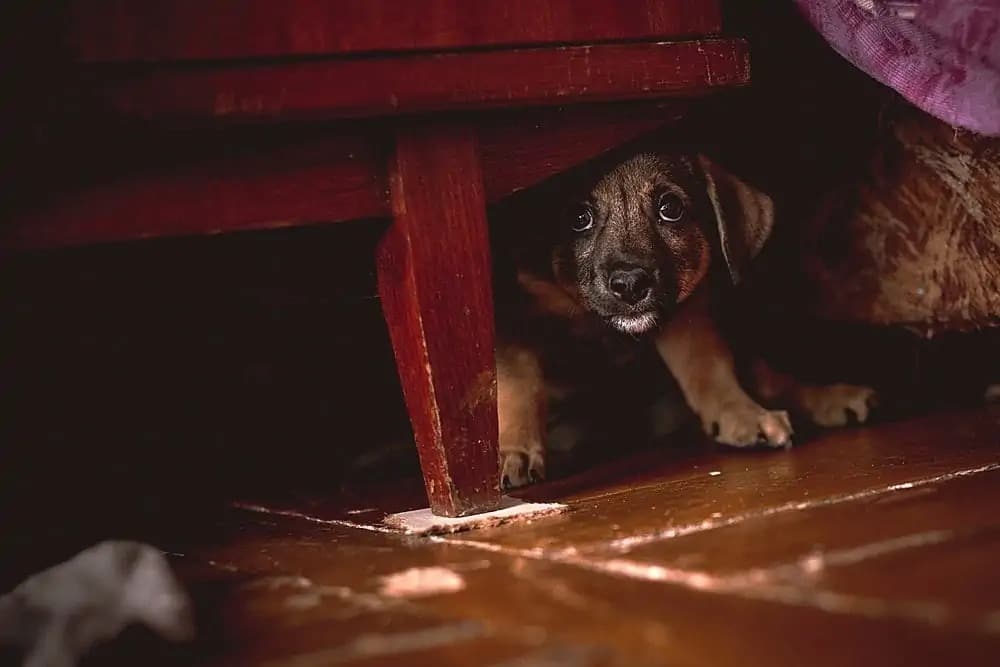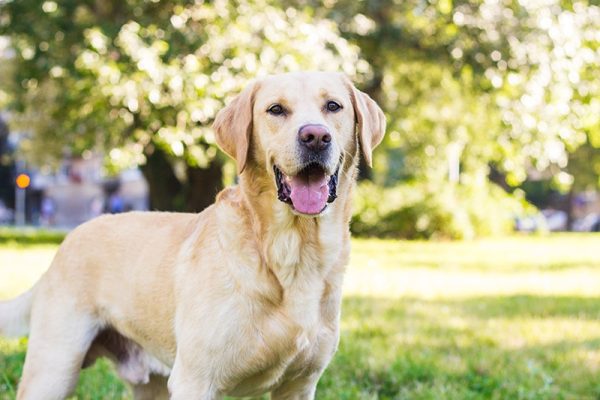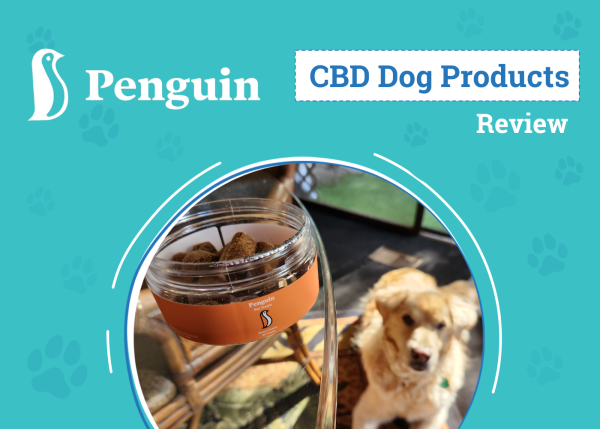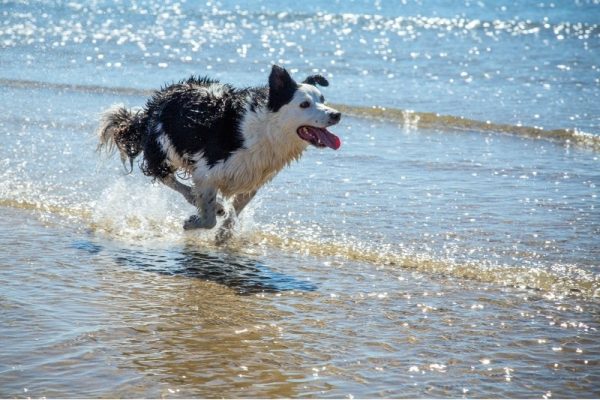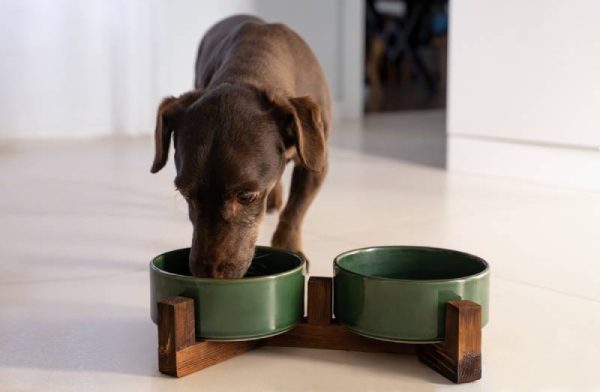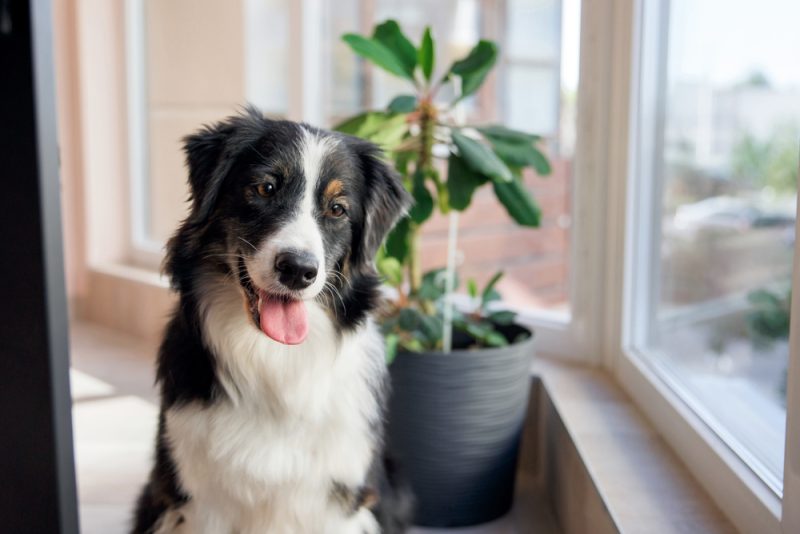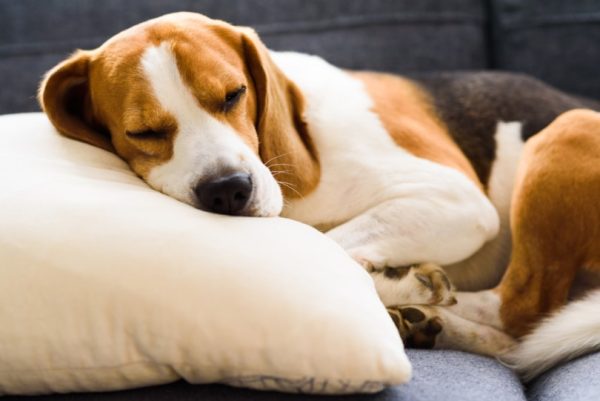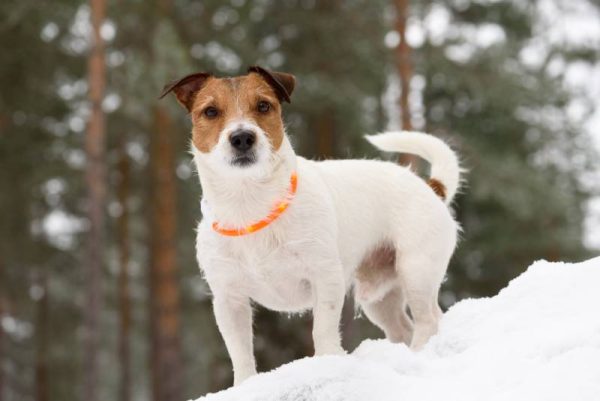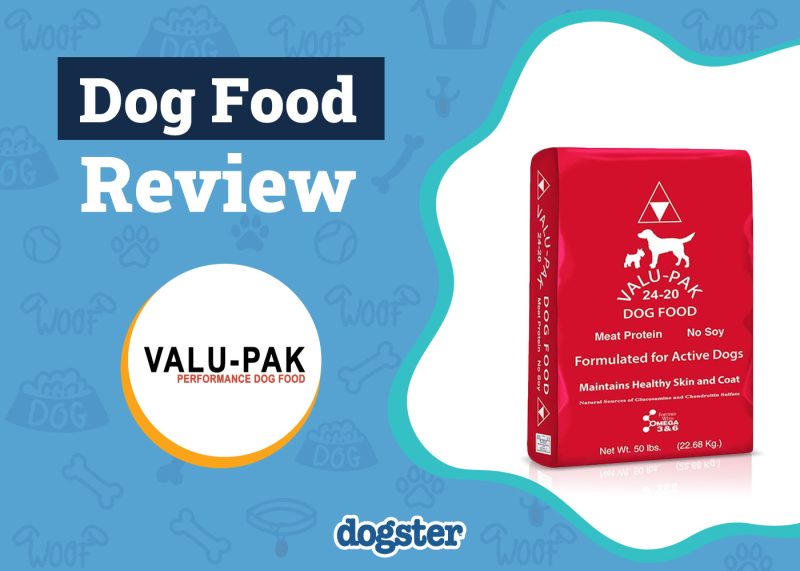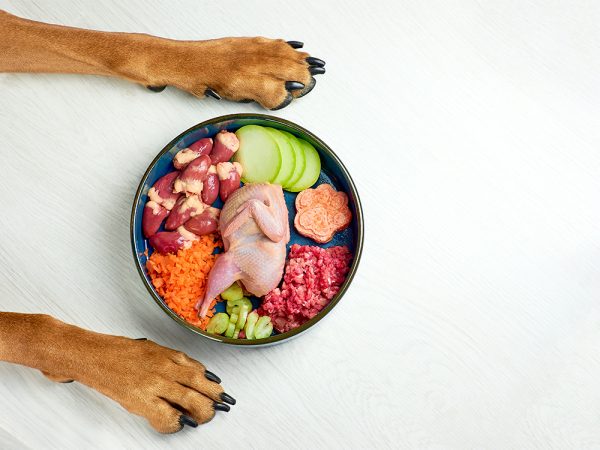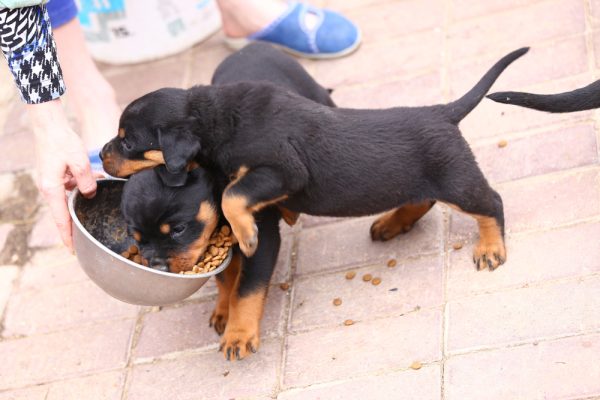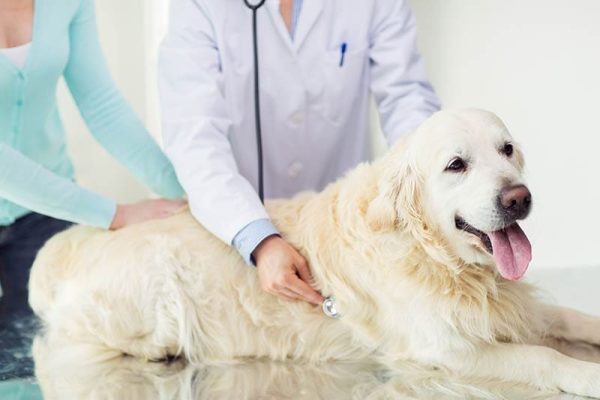Canine noise aversion or phobia is a serious medical condition affecting approximately between a quarter and half of the dogs in the United States. Dogs with this condition experience extreme fear and anxiety triggered by specific loud noises.
If your dog suffers from noise phobia, you know how heartbreaking it is to see them suffer. Thankfully, there are things you can do to help your pup cope and improve their quality of life. Read on to learn about the sounds that could be triggering your dog’s noise phobia and what you need to do to help them when they react fearfully.

The 6 Sounds That Commonly Scare Dogs
1. Thunderstorms
Thunder is perhaps the most commonly known sound that scares dogs. It’s not just the loud booms that are terrifying, though. Thunderstorms bring changes in the air, like drops in barometric pressure, which can significantly affect your pup’s behavior. Storms are also accompanied by changes in smells (like rain) and sights (like dark clouds and lightning), all of which can induce fear in your pet once they’ve associated these changes with the loud booms of thunder.
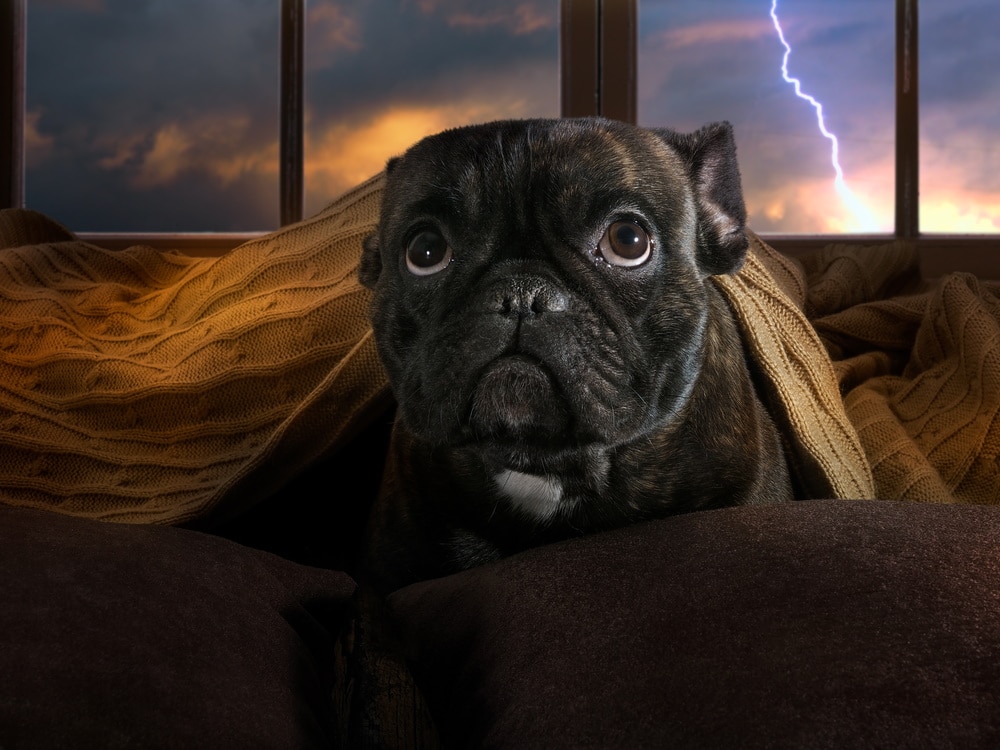
2. Fireworks
Fireworks are another extremely common reason for noise phobia in dogs. They’re extremely loud and unpredictable, not to mention bright. And if there is a major holiday, like the 4th of July or New Year’s Eve, the fireworks could go on for a while.
3. Gun Shots
If you’ve ever heard a gunshot, you know how loud they are and how much they can hurt your ears. Now, imagine hearing that same sound with your dog’s extremely heightened sense of hearing.
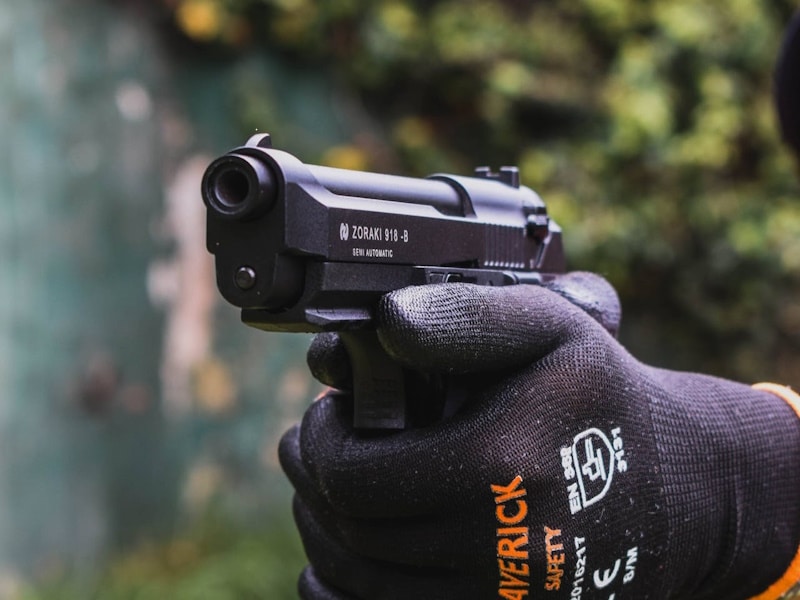
4. Construction Noises
If you or your neighbor are doing a home renovation, the sound of construction can be extremely disruptive to your dog. Power tools and heavy machinery aren’t particularly known for their silence, and having to listen to them for extended periods can be very stress-inducing.
5. Alarms and Sirens
Alarms and sirens are other sudden, unexpected, and loud sounds that can be very distressing for dogs. Whether it’s your car alarm, ambulance siren, or smoke detector beeping to tell you it’s time to change its batteries, these sounds can wreak havoc on your pup.
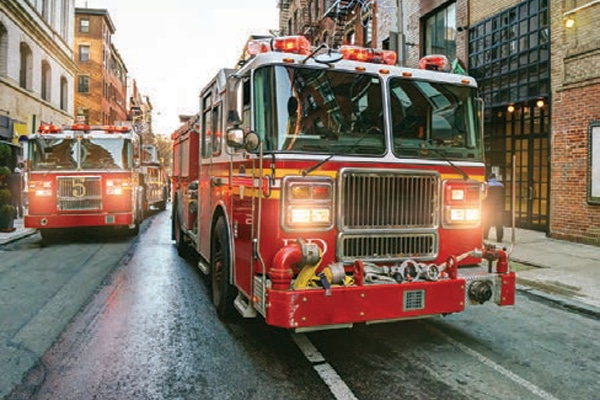
6. Appliances and Equipment
This is a much less common reason for noise phobia; however, certain household equipment, such as a lawnmower or leaf blower, can set off your dog’s noise phobia. A particularly loud air conditioner, snowplow, or garbage truck can have the same effect. Interestingly, a low-battery warning chirp of a smoke detector was found to be the reason for stress behaviors lasting several days in a dog.

Why Are Some Dogs So Scared?
While we cannot say for certain why your dog is scared of particular sounds, there are many different causes and contributing factors. These include:
- Inherited sensitivity to noise
- Early experiences
- Improper socialization
- Traumatic events associated with the specific noise
- Punishment
- Vulnerability due to underlying health issues
Signs Noise-Phobic Dogs May Exhibit
Dogs that are afraid of noises will exhibit their fear in many different ways. Some of the most common signs to watch for include:
- Inappropriate urination or defecation
- Panting
- Hiding
- Chewing/destructiveness
- Drooling
- Lip licking
- Pacing
- Trembling
- Lowered body posture
- Escape attempts
- Unusual vocalization (e.g., barking or whining)
- Hypervigilance
- Owner-seeking behavior
- Refusal to eat

How to Help a Dog With Noise Phobias
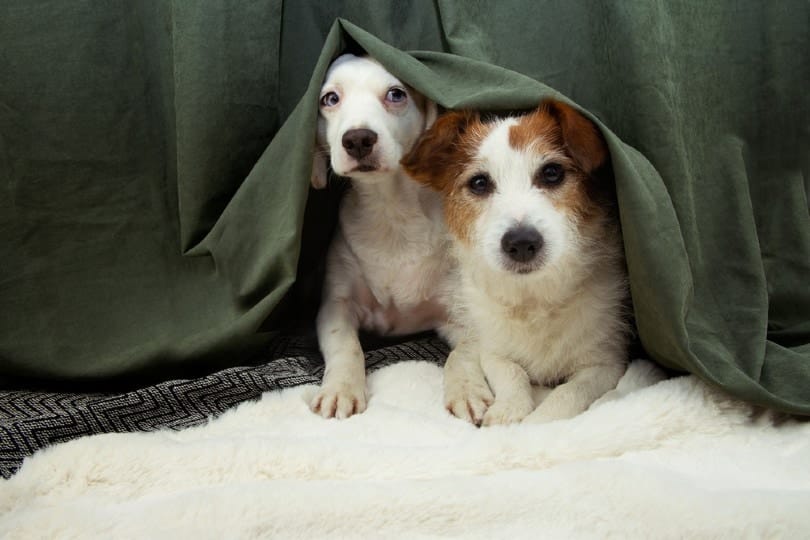
In an ideal world, you’d prevent exposure to the noise triggering your pet. Unfortunately, this is not practical in most situations, but there are things you can do to your environment to make it more comfortable and the sound less scary.
1. Don’t Wait to Address the Problem
It’s important to recognize noise phobia early on so you can address them as soon as possible. The fear your pet has over a sound will intensify the more they hear it. Studies have proven that many pet owners don’t realize that noise phobias are a very real medical issue, so they don’t think to bring it up with the veterinarian. It’s essential to acknowledge that this is not normal and that, in many cases, it cannot be managed by holding and comforting your pet. When owners choose not to be proactive, they often miss the boat in helping address the problem and making their dogs more comfortable and less afraid.
2. Create a Safe Space
Another environmental management technique involves setting up a safe space for your dog to hide when they’re triggered during an episode. It can be one of any number of places, including their crate, a bathroom, closet, or other interior room without windows. Ideally, it should allow the possibility of also blocking visual stimuli.
3. Play Calming Music
It can be helpful to use music or white noise to mask the outside sounds. To work, it’s recommended that the masking sound be similar to the noise to be masked; therefore, repetitive drum beats could mask fireworks.
Additionally, studies show that exposure to certain types of music can help calm anxious and stressed dogs. One found that kenneled dogs’ heart rate variability (HRV) was higher, indicative of decreased stress when they were listening to soft rock or reggae music. Another study found that classical music can make kenneled dogs sleep more and bark less.
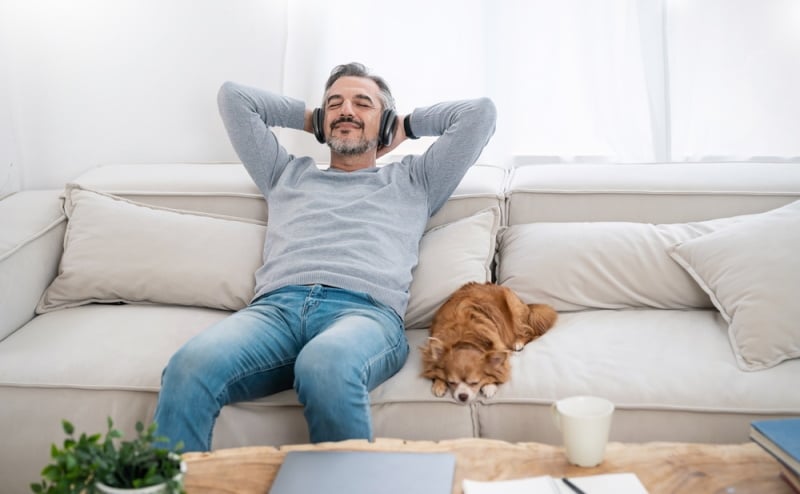
4. Try a Pressure Vest
Anti-anxiety vests, like Thundershirts, work great for some dogs. The effect is similar to swaddling an infant or using a weighted blanket as an adult. Dogs should be used to wearing it before the event and use it during non-stressful situations. Studies suggest that, when worn as per the manufacturer’s instructions, the constant pressure could reduce stress behaviors and help maintain an appropriate heart rate.
If your budget doesn’t have space for anti-anxiety clothes, towel wrapping may be an affordable solution to try.
5. Distract and Reward
Even if you think your dog is not in the mood for it, it can be helpful to try to distract them with food, games, or small training tricks. Also, as strange as it may seem, giving a reward when a loud noise is heard is currently recommended. It won’t perpetuate the problem or reinforce the behavior, but it will allow your dog to build a positive association between the noise and the reward. It is also recommended to give them attention, stroke them, or speak to them if your dog seeks contact with you.
6. Talk to a Vet
Successful treatment of noise phobia in dogs often involves supplements or medication prescribed by a vet.
Certain medications can help calm your pup and keep them below the threshold so that when they hear the distressing noises, they won’t go berserk. Medication for such conditions is either short-acting (given when exposure to the stimuli is expected, such as during the 4th of July when you’d expect a fireworks show) or long-acting (given daily to help decrease overall anxiety).
The vet may also recommend systematic desensitization via commercially available soundtracks or apps. This treatment method will reproduce the sound effects and allow you to counter-condition them.
If you need to speak with a vet but can't get to one, head over to PangoVet. It's an online service where you can talk to a vet online and get the personalized advice you need for your pet — all at an affordable price!


Final Thoughts
Noise phobia is the most common behavioral problem in dogs. It can be triggered by different auditory stimuli, with the most common being thunderstorms, fireworks, and gunshots. Noise phobia can be extremely distressing for the pup suffering from it, so the goal of treatment is always to decrease signs and improve the dog’s quality of life.
Owners of dogs with such phobia can adjust their environment and may also consider behavioral modification therapies or medications. If your dog is suffering from this condition, please reach out to your veterinarian for advice and recommendations.
You might also be interested in:
- Sounds Only Dogs Can Hear: Vet-Analyzed Canine Hearing Range
- Sound Oasis Pet Sound Therapy System Review
Featured Image Credit: evgengerasimovich, Shutterstock

